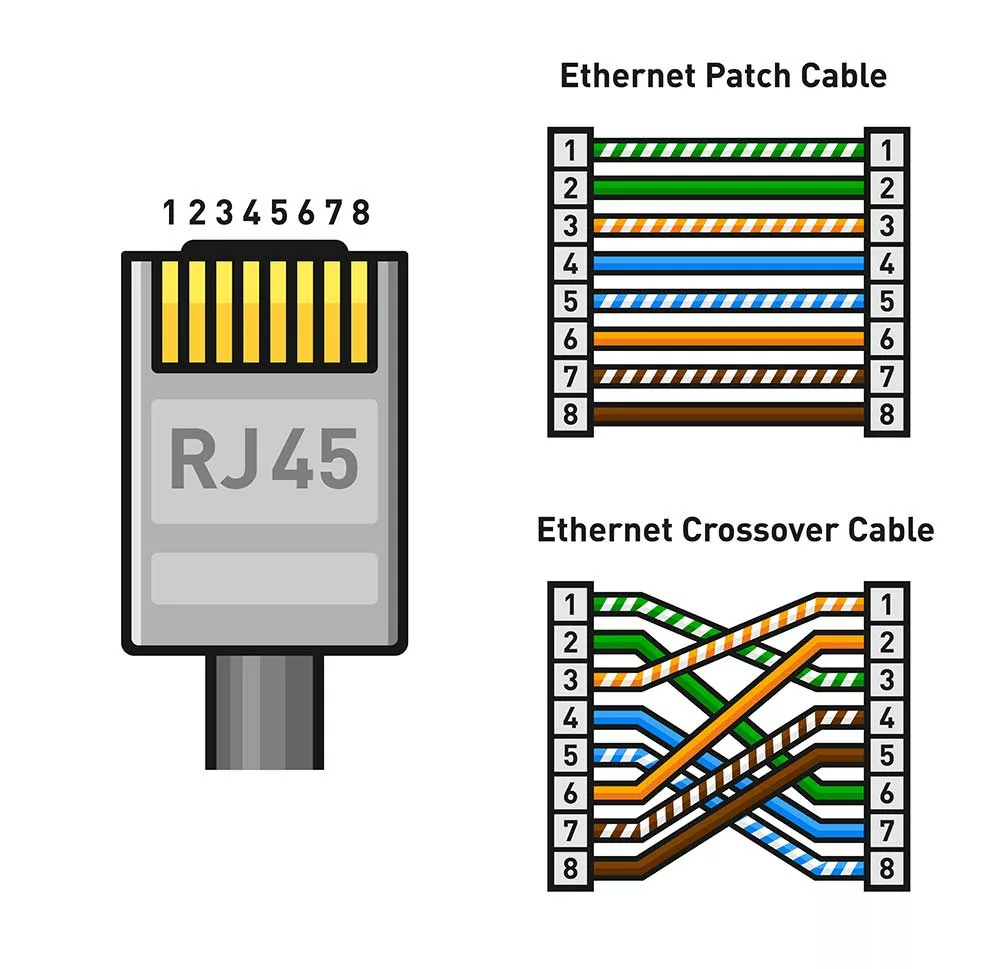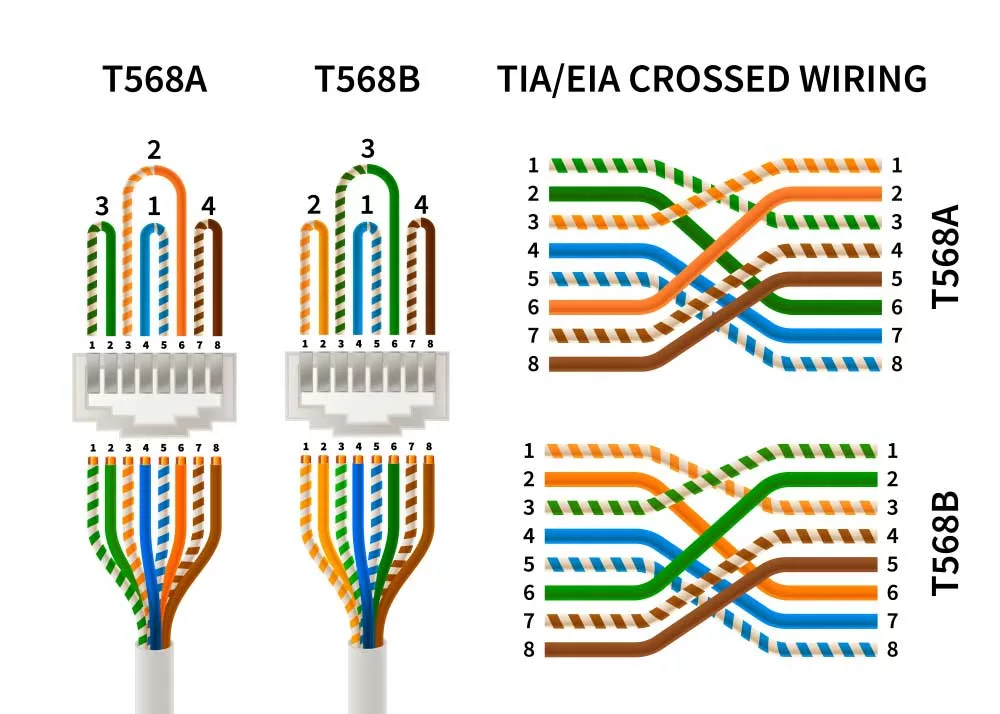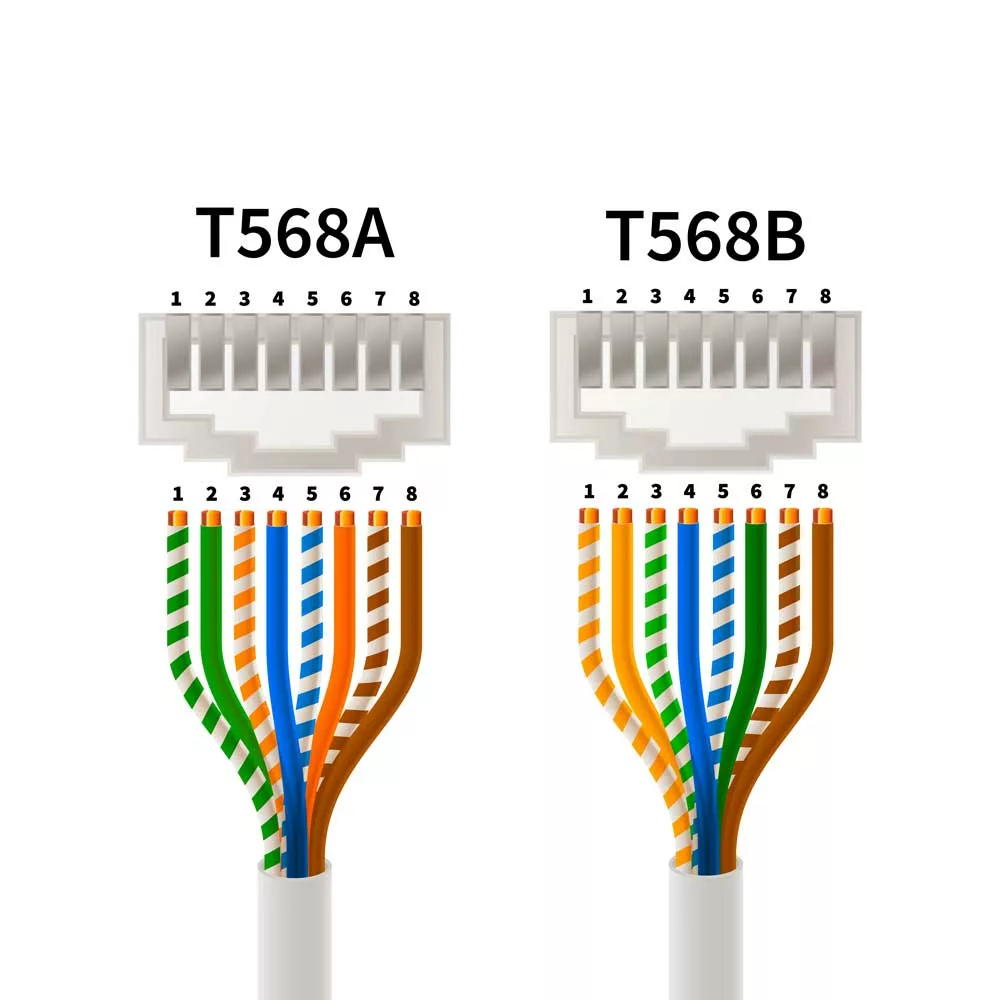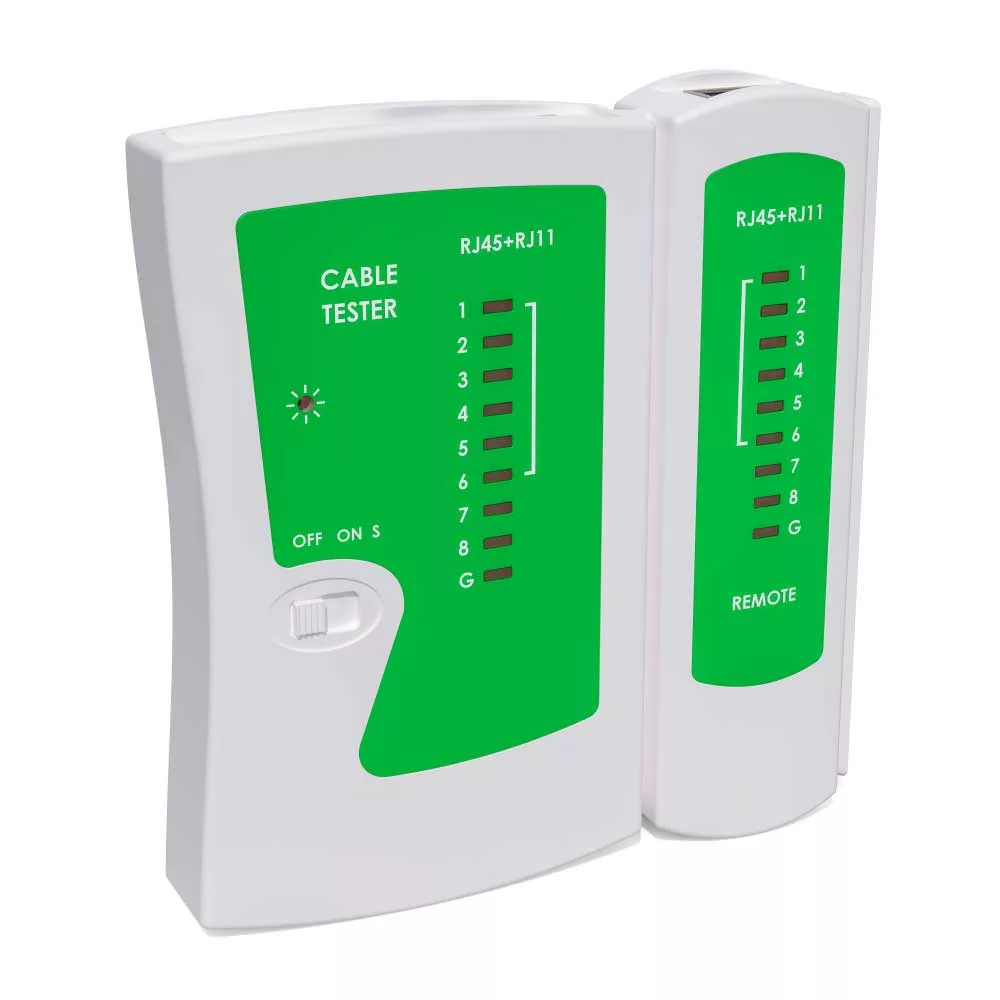About the Ethernet crossover cable diagram, Most of the Ethernet forms do not support direct connections of cables between two hosts.
The two endpoints must communicate through a middle device so that no conflicts arise due to the use of the same wires in transmitting and receiving signals.
In Ethernet, the MDI-X feature automatically detects the signaling convention on the cable’s other end and accordingly changes the transmission and receiving wires.
However, you must use this feature on only one cable and not at both ends. In your houses, broadband routers use this MDI-X support towards their ethernet interfaces.
For direct network connections, connect two ethernet devices (without any Gigabit configuration) with a crossover cable, and the device detects crossover cables and works effortlessly.
How does it work? The Ethernet crossover cable diagram will help you find out the answer.
Table of Contents
- What is an Ethernet crossover cable?
- Patch cable Vs. Crossover cable: when to use?
- How can you correctly assemble a CAT-5 crossover cable?
- Two easy ways for testing crossover ethernet cable:
- Conclusion:
What is an Ethernet crossover cable?
A crossover cable connects two similar devices, such as two computers, two switches, two routers, etc.
The cable got its name as it crosses or swaps the signals it receives through one end while sending them to another.
Ordinary patch cables use the same sequence of wires at both ends, while crossover cables have different standards of wires at their two ends.
In other words, you will find the T568A wiring standard at one end while the T568B wiring standards are at the other.
The connector at both ends of the cable, i.e., Connector A and Connector B, have different wire arrangements, so wires coming from Connector A should match the correct pin at Connector B.
Patch cable Vs. Crossover cable: when to use?
Here are three different scenarios which explain the cables’ use in various applications.
Scenario 1: computer to computer
Suppose you have two computers that are directly connected. Now, if both computers transmit signals on the TX wire, the signals will collide, and there are no signals on the RX wire.
Thus, none of the computers will receive any signals. In such cases, if you use a crossover cable to connect these two computers, the signals sent from the first computer on the TX wire will be received on the RX wire of the second computer and vice versa.
As a result, the computers will quickly receive signals sent to each other; thus, you use crossover cables to connect similar devices.
Scenario 2: Computer to switch to computer
Now, suppose you have attached a switch between two computers; the switch is believed to cross the wires to enable communication between two wires.
When the first computer sends signals on the TX wire, the switch gets it on its RX wire, sends it again on the TX wire, and is finally received by the second computer on its RX wire.
Thus, if you are switching between two computers, you can use patch cables, and there is no need for crossover cables.
Scenario 3: Computer to switch to computer
Now, what if you use two switches between the two computers?
The two stitches will cross the wires separately; thus, another crossing pair will emerge between the switches.
As you read above, similar devices need crossover cables for connection, so here, you will need different cables for different connections, such as:
You will need a patch cable when the first computer connects to the first switch.
The first switch connects to the second switch; you will need a crossover cable.
When the second switch connects to the second computer, you will need a patch cable again.

Ethernet connector pinout color code straight vs. crossover
How can you correctly assemble a CAT-5 crossover cable?
When you use CAT-5 cables to connect network video recorders and IP security cameras in IP surveillance systems, you have to use a crossover cable.
Please follow the instructions below for connecting CAT-5 crossover cable, and the exact instructions apply to CAt-6 and other twisted pair cables.
- First, take the cable stripping tool and strip around 1⁄3 of the outer jacket of the CAT-5 ethernet cable. Be careful and do not damage the internal conductors.
- Arrange the wires as shown in the ethernet crossover cable diagram.

Caption: ethernet crossover cable diagram
- Insert the wires in the RJ45 connector jackal while ensuring that you keep the wires in the correct order, as shown.

Caption: correct order of the wires
- Once inserted, crimp the wires by inserting the RJ45 connector into the crimping tool. Crimp firmly so the RJ45 connector attaches nicely to the CAT-5 cable.
Two easy ways for testing crossover ethernet cable:
You can use crossover cables in temporary network situations after you make sure they are in good condition.
Using a cable tester
Get a cable tester: Cable testers are specially designed to check connectivity in computer cables.
Power ON the tester: Switch or press the power button ON, and you will see a light that indicates that the tester is ON.
Don’t forget to read the instructions on the tester, as some testers may have different ways of operating.
Plug the cable: Cable testers come with two main and remote units. Take one end of the ethernet cable and insert it into the main jack until you hear a click sound.
Take another end and insert it into the remote unit jack. Which cable end to insert in which jack does not matter; you only have to complete the connection.
Press the test button: The test starts when you complete the connection. Wait for some time until the tester gives you results.
Check the tester results: Once the test completes, the light on the main unit display lights up.
In some other testers, you will see all green lights lit up after test completion.
You can check the light pattern from the manual. If the proper lights are lit up, the cable is good, and you can use it.
If the connection lights do not light up, the cable is wired incorrectly or damaged. You must fix the cable before use.

Cable tester
Connecting two computers:
Plug the cable into computers: Bring the two computers close to each other so the cable can connect between them.
Insert two ends of the cable into the two ethernet jacks of both computers.
Go to the computer settings: Go to the control panel settings of the one computer if you are using Windows.
Alternatively, go to the System settings using an Apple computer.
Once you go to the computer settings, click “View network computers and devices” (in Windows) or “Sharing” (in Mac). This feature shows shared devices of the computer.
If the cable works fine, the menu will show the second computer. If you do not see anything, it means the cable is not transmitting anything between two computers, and you probably need a new one.
Conclusion:
Crossover cable and Ethernet cable look almost identical, but the former is expensive and capable of reversing the transmitting and receiving signals.
If you think it is challenging to identify crossover cables from Ethernet cables, then you are wrong. Most crossover cables have “crossover” stamped on the cable coating.
In case you do not see a stamp, hold the two ends of the wires facing toward you. The wires have colored codes and follow a particular sequence.
If the wire color and arrangement are different at two ends, the cable is a crossover, and if the sequence is the same, it is an ordinary ethernet cable.
Whether you need a standard ethernet or crossover cable, Cloom has it all for you.
We deal in all types of ethernet cables of all categories and other cable assemblies suitable for various applications.
